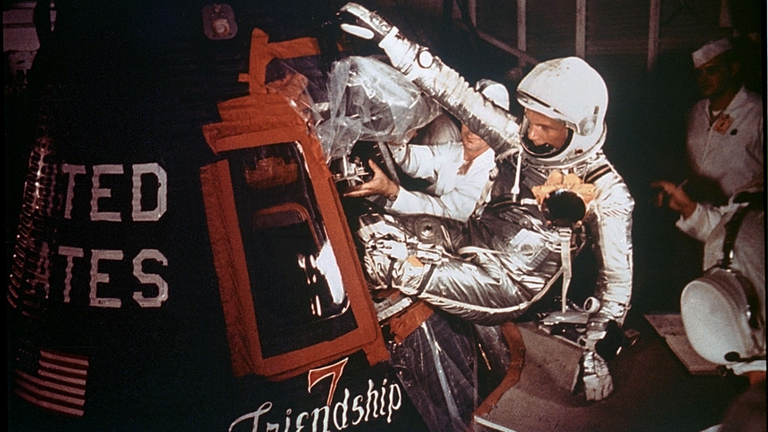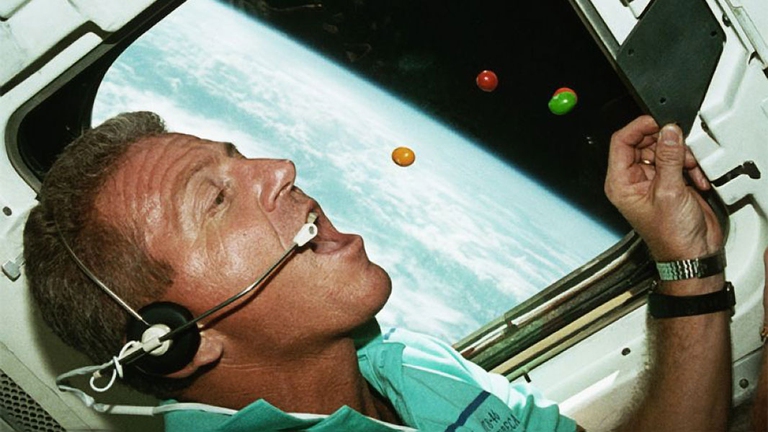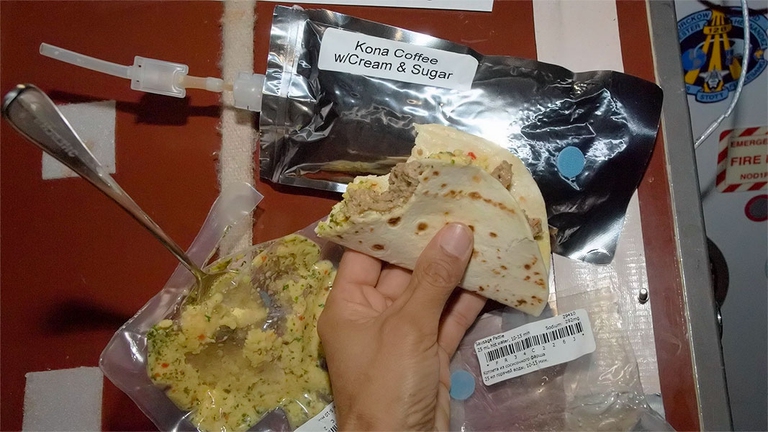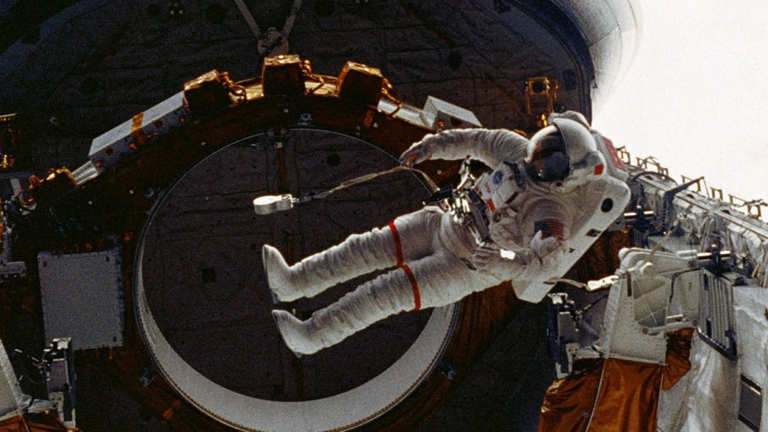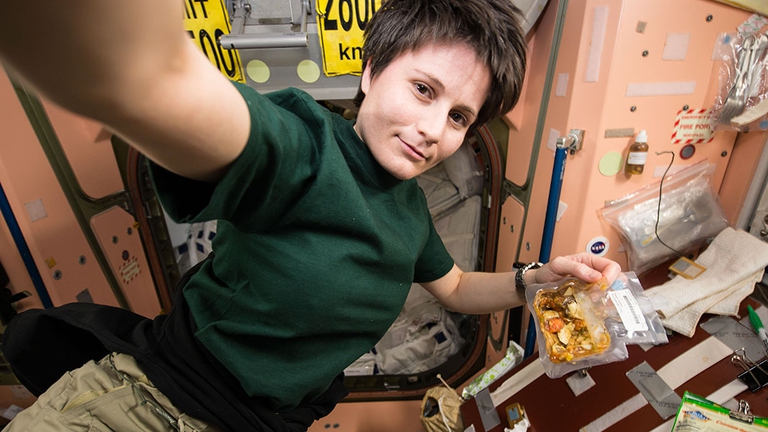
As per tradition after 12 years India held Mahakumbh, the world’s largest spiritual congregation that has been attracting pilgrims from across the globe.
Though eating is a primary necessity for astronauts, it doesn’t mean it’s necessarily a pleasure. The first meals eaten in space were flavourless, odourless and lacked consistency. But times have changed, and a healthy, balanced, and tasty diet is essential for astronauts to go through long periods at the International Space Station, without negative impacts
Though eating is a primary necessity for astronauts, it doesn’t mean it’s necessarily a pleasure. The first meals eaten in space were flavourless, odourless and lacked consistency. But times have changed, and a healthy, balanced, and tasty diet is essential for astronauts to go through long periods at the International Space Station, without negative impacts on their organism.
It was February, 20 1960 when US astronaut John Glenn became the first man to eat anything in space on board the space shuttle Friendship 7: applesauce in tubes, sugar cubes and water. Such limited menu wasn’t linked to the shortness of flight (less than 5 hour), but it was due to the fear that food could stop in the astronaut’s throat because of the absence of gravity. Glenn, fortunately, didn’t choke and demonstrated that eating in space was possible.
In spite of their glorious missions, astronauts had for long to settle for food. During the Mercury, Gemini, and some of the Apollo missions, the menu was mainly made of food squeezed in tubes (similar to baby food) and bite-sized cubes coated with gelatine.
Today, the International Spatial Station offers better meals. Of course, it’s not like eating at The Ritz, but astronauts can’t complain as they enjoy a rather pretty view of the Earth from space.
Fresh fruit and vegetables are rare in space. So, astronauts must make do with a variety of canned and dehydrated foods. But astronauts, too, have their favourites and have some benefits for special occasions.
It’s not clear if astronauts love more eating chocolate-covered nuts or make them fly towards their mouth, playing with the absence of gravity.
During long space missions with no gravity, bone mass can decrease by up to 20 per cent. Foods rich in calcium like yogurt are thus essential. Astronauts can choose flavours like blueberry, raspberry, peach and strawberry.
They’re long-life products and make little crumbs. Tortillas are the official bread of spatial programmes and the most requested fillings are peanut butter and jam.
In space, the sense of taste is reduced due to fluid redistribution in the body. For this, a spicy sauce can reactivate taste buds.
These crustaceans, once dehydrated and covered with a spicy sauce, are the most requested package food. Space veteran Story Musgrave used to eat them at every meal, including for breakfast.
The recent creation of Japan’s space module not only has enriched the spatial station with a new scientific laboratory, but has also filled the pantry with new foods, from negima and okonomiyaki to tofu and udon.
Along with coffee capsules, Italian astronaut Samantha Cristoforetti used to bring with her a soup with Slow Food legumes made by Agrotec, Italian company that produces food for European astronauts. It’s a ready-to-eat soup that combines taste with nutrients needed to fight physiological changes linked to long periods in space.
In June 2008 astronauts of the ISS were given cans that read “tasty snacks”. Mystery adds taste to life!
Crackers’ crumbs can be catastrophic despite the presence of air recycling filters. Crumbs float and end up in astronauts’ eyes and respiratory system.
Coca-Cola cans were brought into space in 1985, but astronauts had to struggle with “wet” burps. With no gravity, it only takes a small quantity of gas in the stomach to turn it into a water pistol!
Despite it is well known and sold in spatial museums, dehydrated ice-cream was brought into space only once in 1968 on board Apollo 7. In space, it looks like a hard, crumbly candyfloss.
Its consistency is impossible to be maintained in space, resulting in a gummy food. For this, NASA has never sent pizza into space shuttles.
Like space ice-cream and crackers, chips are too friable to be eaten without contaminating the air in the shuttle.
Along with some problems in terms of conserving fish products, cooking fish in space was something rather smelly.
The Gemini III mission in 1965 will be remembered as the first mission to smuggle food into space. Pilot John Young hid a corn beef sandwich in his suit. When NASA found it out, pandemonium erupted.
For the joy of children, Brussels sprouts are the least requested food in space.
Siamo anche su WhatsApp. Segui il canale ufficiale LifeGate per restare aggiornata, aggiornato sulle ultime notizie e sulle nostre attività.
![]()
Quest'opera è distribuita con Licenza Creative Commons Attribuzione - Non commerciale - Non opere derivate 4.0 Internazionale.
As per tradition after 12 years India held Mahakumbh, the world’s largest spiritual congregation that has been attracting pilgrims from across the globe.
Workers in tea gardens of West Bengal, India, that produces Ctc tea for domestic consumption complain that they have been devoid of basic facilities while political parties make hollow promises during every elections which are never fulfilled.
India is in the middle of the elections, but sadly none of the politicians have uttered a word on man-animal conflict that has been devouring several lives every year.
Manipur, a state in north-east India, is still reeling under the tremors of violence that broke out last year devouring lives and paralyzing the economy.
The government of Tanzania is currently planning to evict more than 80.000 indigenous Maasai people from their ancenstral land
A new UNU-INWEH report on the global bottled water industry reveals the massive scale of this market and the lack of strict quality controls.
Isatou Ceesay founded a social enterprise that is helping to fight plastic pollution and empowering women and young people to gain economic independence.
In 2020, Mihela Hladin made a radical decision that many, in recent times, have probably considered. This is her story, with photos by Matt Audiffret.
The Brazilian government has started evicting illegal gold miners, responsible for the health emergency that has hit the Yanomami people.
